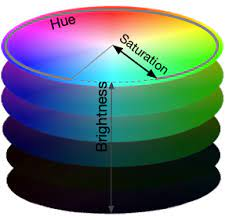How To Choose The Right Mix Of Window Styles In Your Home

Windows are some of the most important components of any home because they contribute to the exterior architectural design, they allow you to see out on the world around your home, and bring in sunlight while remaining steadfast against the effects of inclement weather.
But when you choose the right windows for your home, you may have some concerns over mixing multiple window styles together. Most homeowners have been told that combining styles may not be the best choice for a home and, in many cases, that is true.
Certain window styles just don’t mix well together and the effects can be felt both indoors and out. You’re marring the appearance of the exterior design and some rooms will look strange with the incorrect window installed.
We’re going to help you avoid the most common mistakes that are made by homeowners who attempt to mix and match their windows. Just follow these simple guidelines, courtesy of your friends at Renewal by Andersen of Philadelphia:
Consider All Sides Separately
The front of your home is the side that people see when they approach. It’s the first impression your home makes and so it might be somewhat more important to be slightly more subtle and traditional when choosing the right windows.
However, just because you’ve chosen one type of window for the front does not mean you need to rely on that same style on all other sides of the house. It’s just important to make sure that you treat the windows in a similar fashion all around the home.
How you do that is up to you, but as long as you have some kind of consistency to all the windows, you should be able to mix and match your styles. So if you have bay or bow windows on the front of the home and casement windows on the sides or in back, finding some way to treat them all in unison is the key.
If you fail to do this, your variations will become far more pronounced than you may have intended and the home will look scattered and disorganized.
Functionality Concerns
Let’s not forget that windows have a function and they serve a purpose beyond aesthetics. That’s an important factor to consider as you select the styles you plan to install around the home.
That means thinking about the rooms in which you are placing certain window styles and how those windows will work within the parameters of how you plan to use those rooms. For example, rooms that face direct sunlight may need one kind of window while rooms that are prone to receiving more wind may require another specific window type.
It all depends on the direction a room is facing and the various impacts that room might expect to endure throughout the year. The seasons can change these impacts accordingly, but for the most part, if a room is exposed to certain elements, you need to plan your window style to accommodate.
You may want a lot of natural sunlight to come into the home, so choosing a bay or bow window to increase the amount of glass in that room will allow for that sunlight to get in. You may not want to do that in other rooms that don’t get much sunlight due to the direction they face.
The Type of Room
Here’s another thing to consider, the various rooms in the home are all designed for different purposes. The bedroom is different than the living room which is different than the kitchen, and so on. So think about what each room means to you and your family before you assign a certain type of window style to it.
Size is a good indicator as to which styles work best with which rooms. The living room is often one of the largest and most widely used rooms in the house. So you may want to go with larger windows here, particularly if you have a compelling view to look at from your couch or easy chair.
Bathrooms are designed for privacy, so choosing a window that allows for that while letting in fresh air or sunlight is a common goal for most homeowners.
Your dining room is probably used more readily in the evenings, when you and your family sit down for dinner. Since it will be dark out, you may want to choose a window type that doesn’t require large panes of glass, opting instead for something less visible.
It all depends on your home and the rooms you have in it. But taking stock of these areas and how you plan to use them is a good way to mix and match your window styles for the most effective combination of functionality and aesthetic.





















+ There are no comments
Add yours